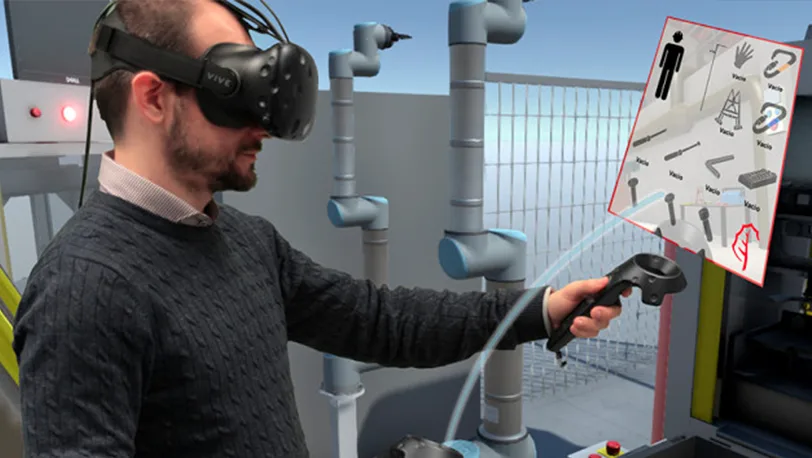Virtual Reality (VR) is revolutionizing employee training and emergency prevention in various industries. This technology enables the creation of realistic, high-impact simulations that not only improve learning but also minimize the risks associated with traditional training. In this article, we will explore how VR is changing the way businesses train their employees and how it plays a crucial role in emergency preparedness.
1. Why Virtual Reality is Key to Corporate Training
Virtual Reality enables businesses to offer immersive training experiences that simulate real-world situations and emergencies safely and effectively. With VR’s total immersion, employees can face work scenarios and high-risk situations without the real-world hazards.
Key Benefits:
- Improved knowledge retention through realistic simulations.
- Training without exposing employees to real risks.
- Repetition of exercises without additional costs.
2. VR Training for Emergency Prevention: Simulations that Save Lives
One of the greatest advancements of VR in training is its application in emergency prevention. From first aid procedures to evacuations or handling heavy machinery, VR provides a controlled environment for practicing critical tasks. Employees can experience high-risk situations and learn how to respond under pressure.
Application Examples:
- Healthcare Training: Training medical staff in procedures and emergency care without putting patients at risk.
- Workplace Safety: Simulations of industrial accidents, fires, and evacuations.
- Security Forces and Emergencies: Training in rescues, tactical interventions, and crisis management.
3. Benefits of Virtual Reality in Professional Training
Immersion and Realism: VR scenarios are not only visually impactful but also functional, allowing employees to experience a realistic and detailed training process.
Safe Practice: Employees can practice high-risk tasks without the dangers associated with real-world training environments.
Instant Feedback: VR platforms provide real-time feedback, helping employees improve their skills with every session.

4. Cost Reduction in the Long Term: Why Invest in VR?
Although the initial investment in Virtual Reality technology may seem significant, the long-term costs are much lower compared to traditional real-world training. There’s no need for expensive physical equipment or the use of real-world environments that may be costly or logistically difficult to replicate.
5. Success Stories: Companies Already Using VR for Training
Numerous industries are adopting VR as their primary training tool. Some prominent sectors include:
- Healthcare Industry: Hospitals using surgery simulations to train medical professionals.
- Safety Companies: Simulations of fire evacuations or industrial accidents to train employees without putting them at risk.
- Security Forces and Emergencies: VR training for preparing for natural disasters, rescues, and high-stress crisis situations.
These examples show the potential of Virtual Reality to transform training dynamics and reduce risks across various sectors.
6. How to Implement VR in Your Company for Training and Emergency Prevention
To begin integrating Virtual Reality into your company’s training programs, consider the following steps:
- Identify Training Needs: Determine which areas of training will benefit most from VR simulations.
- Select the Right Software: There are various VR platforms offering customizable simulations for specific industries.
- Train Employees: Provide the necessary infrastructure to implement VR training sessions.
- Measure Results: Track employee performance through VR feedback to ensure training objectives are met.

Conclusion: The Future of Training with VR
The future of corporate training is here, and Virtual Reality is leading the way in this revolution. As more companies adopt this technology, we will see significant improvements in training effectiveness, workplace safety, and emergency preparedness. VR offers unprecedented opportunities to enhance employee preparedness, and its impact will continue to grow in the years to come.
Ready to take your company’s training to the next level? Virtual Reality is the tool of the future, and your team deserves the best. Contact us today to learn more about integrating VR into your training programs.
📩 Fryos Studios Contact & Socials
Email: info@fryosstudios.com
🌐 Visit us: www.fryosstudios.com
Follow us: Twitter (X) | Instagram | Facebook | YouTube

